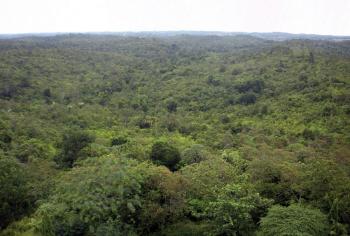
LuAnne Cadd/AP - A baby Grauer's gorilla that had been poached from Kahuzi-Biega National Park is seen at the Senkwekwe Orphan Gorilla Center at Virunga National Park in eastern Congo. Twenty-five species of monkeys, langurs, lemurs and gorillas are on the brink of extinction and need global action to protect them from increasing deforestation and illegal trafficking, researchers said Oct. 15, 2012.
The Washington Post - Associated Press - October 15, 2012
NEW DELHI — Twenty-five species of monkeys, langurs, lemurs and gorillas are on the brink of extinction and need global action to protect them from increasing deforestation and illegal trafficking, researchers said Monday.
The report by the International Union for Conservation of Nature was released at the United Nations’ Convention on Biological Diversity being held in the southern Indian city of Hyderabad.
Conservation efforts have helped several species of primates that are no longer listed as endangered, said the report, prepared every two years by some of the world’s leading primate experts.



 Sea-level rise of 1 m could destroy 60% of developing world's low-lying coastal wetlands. Photo© istockphoto.com.
Sea-level rise of 1 m could destroy 60% of developing world's low-lying coastal wetlands. Photo© istockphoto.com. Image: In 2002, Willie Smits began restoring this tropical rainforest, degraded by timber piracy and agricultural burning, to its natural state. Six years later, the European Space Agency documented increased cloud cover, increased rainfall, and moderated temperatures over this restored ecosystem. In 2010, insects and birds not seen in 20 years began returning to this forest.
Image: In 2002, Willie Smits began restoring this tropical rainforest, degraded by timber piracy and agricultural burning, to its natural state. Six years later, the European Space Agency documented increased cloud cover, increased rainfall, and moderated temperatures over this restored ecosystem. In 2010, insects and birds not seen in 20 years began returning to this forest.
Recent Comments